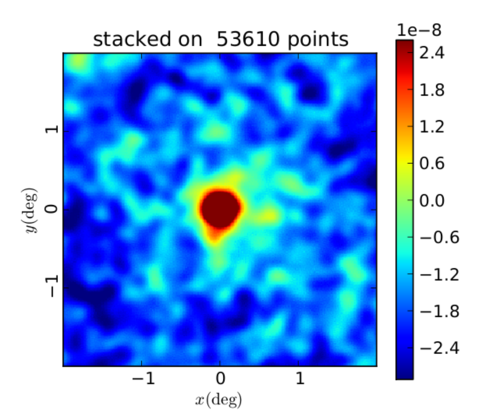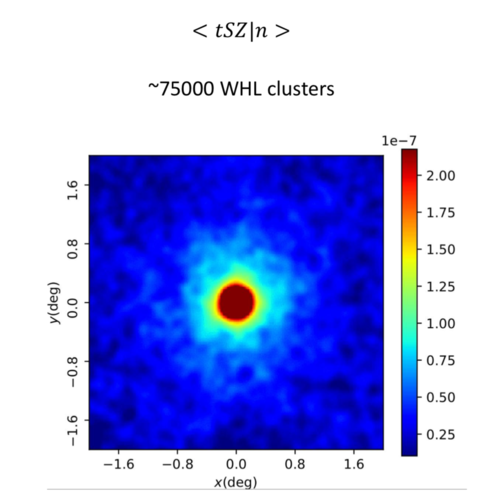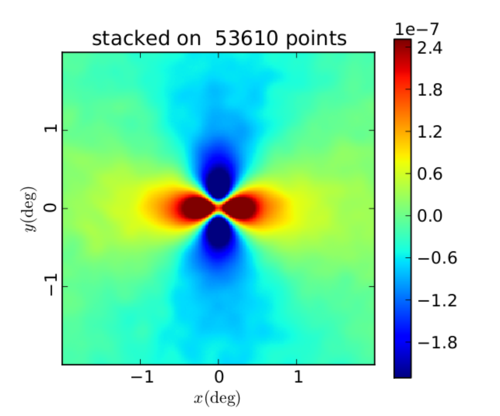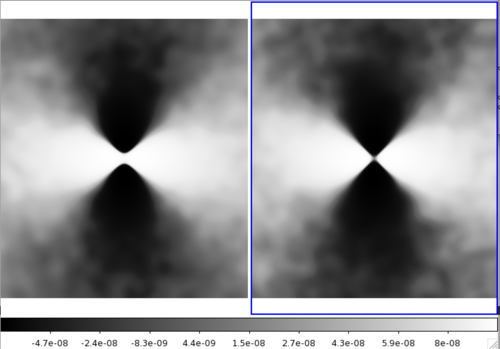November 26th, 2018
Planck y-map stacked on RedMaPPer Cluster Catalog
In the following plots, I am using the catalog described on the website as "Y3A2 Gold 2.2.1 sof colors, redMaPPer v6.4.22+2, Full, lambda>20." There are 53,610 clusters in this catalog. I start by taking the first RA and Dec given for each cluster (defined as the "most likely center" of the cluster). Then, since the Planck maps are Healpix maps with Galactic coordinates, I convert (RA, Dec) to (l,b) using Astropy. Next, I convert (l, b) to Healpix (theta, phi) values assuming that b=0 corresponds with theta=90 degrees and that l = phi (and then theta, phi should be in radians). This is the (theta, phi) list I am inputting to COOP to identify the cluster locations on the Planck y-map.
Random orientation, map FWHM 10'
This can be compared with Connor Bevington's stack on WHL clusters:
As a sanity check for my (theta, phi) conversions, I wanted to ensure that this output was different from what it would be if I stacked on random (theta, phi) values. So I shifted each (theta, phi) by some amount and stacked on those points.
QU orientation, map FWHM 10'
I was suspicious of this stack because it didn't seem to be centered on a cluster, so I also did a stack on random points in the map and compared them side-by-side. The difference was only noticeable when doing very specific scaling (here I am using SAO DS9 and scaling by "histogram"):
The results of stacking on cluster theta, phi values are on the left and random points are on the right.



